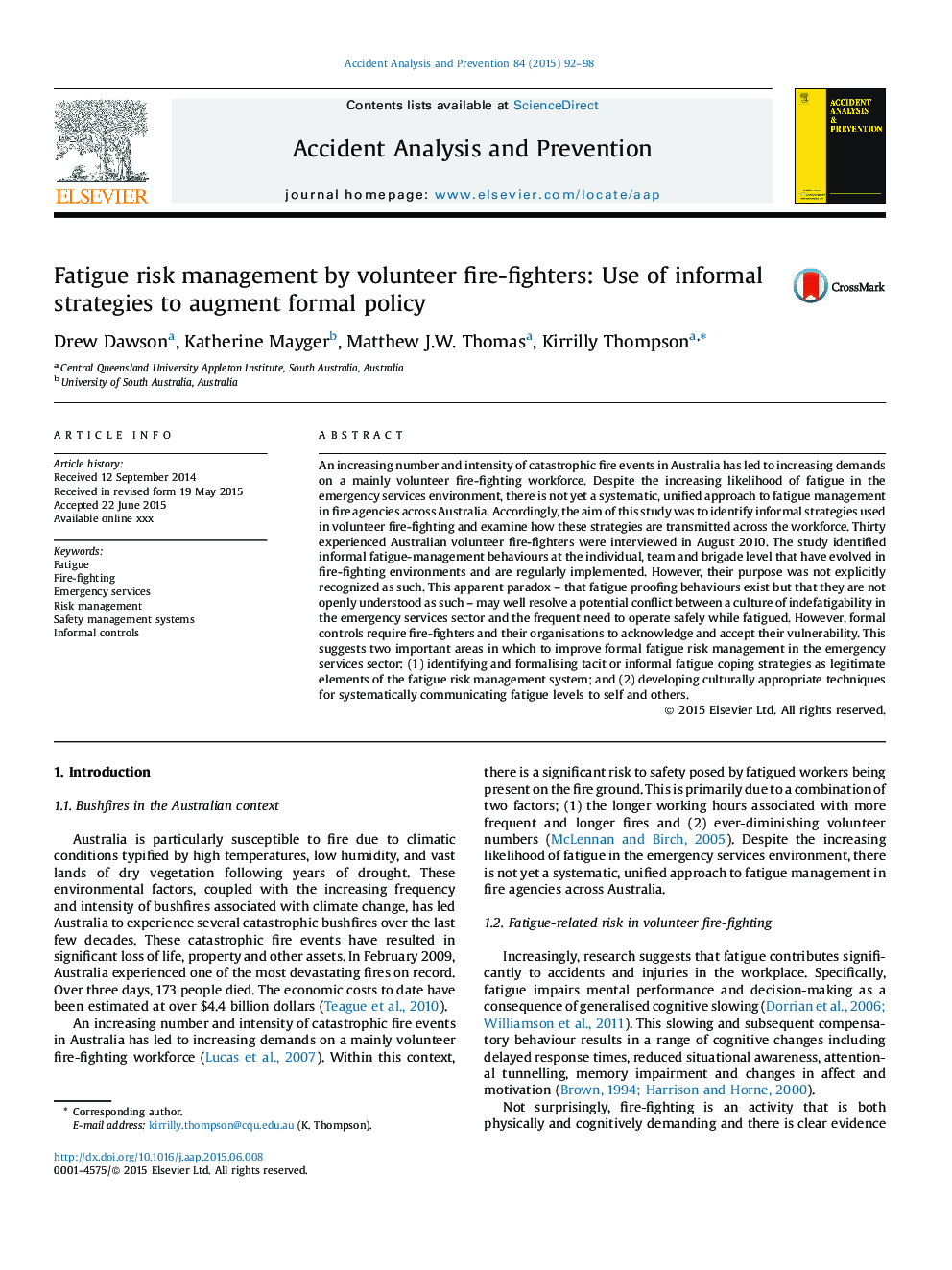| Article ID | Journal | Published Year | Pages | File Type |
|---|---|---|---|---|
| 6965462 | Accident Analysis & Prevention | 2015 | 7 Pages |
Abstract
An increasing number and intensity of catastrophic fire events in Australia has led to increasing demands on a mainly volunteer fire-fighting workforce. Despite the increasing likelihood of fatigue in the emergency services environment, there is not yet a systematic, unified approach to fatigue management in fire agencies across Australia. Accordingly, the aim of this study was to identify informal strategies used in volunteer fire-fighting and examine how these strategies are transmitted across the workforce. Thirty experienced Australian volunteer fire-fighters were interviewed in August 2010. The study identified informal fatigue-management behaviours at the individual, team and brigade level that have evolved in fire-fighting environments and are regularly implemented. However, their purpose was not explicitly recognized as such. This apparent paradox - that fatigue proofing behaviours exist but that they are not openly understood as such - may well resolve a potential conflict between a culture of indefatigability in the emergency services sector and the frequent need to operate safely while fatigued. However, formal controls require fire-fighters and their organisations to acknowledge and accept their vulnerability. This suggests two important areas in which to improve formal fatigue risk management in the emergency services sector: (1) identifying and formalising tacit or informal fatigue coping strategies as legitimate elements of the fatigue risk management system; and (2) developing culturally appropriate techniques for systematically communicating fatigue levels to self and others.
Related Topics
Physical Sciences and Engineering
Chemical Engineering
Chemical Health and Safety
Authors
Drew Dawson, Katherine Mayger, Matthew J.W. Thomas, Kirrilly Thompson,
